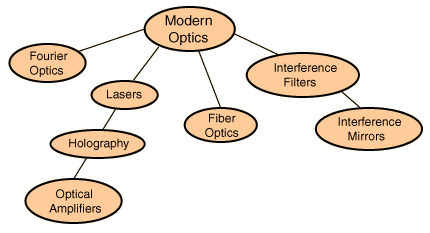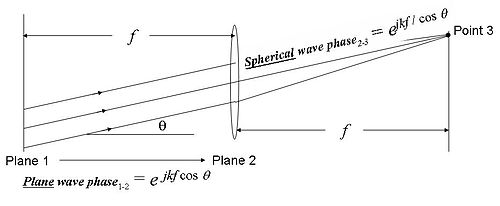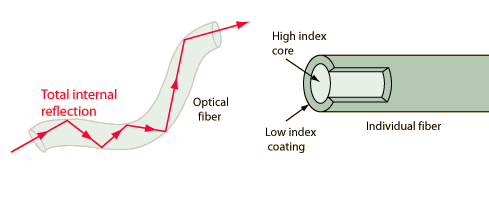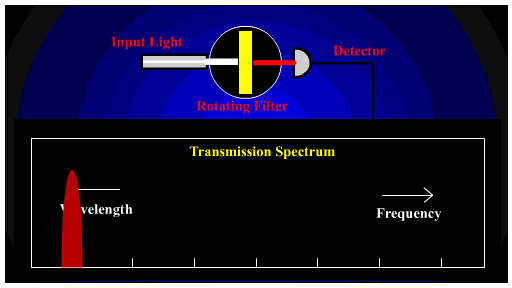What is Optics?
Optics is the branch of physics which involves the behavior and properties of light, including its interactions with matter and the construction of instruments that use or detect it. Optics usually describes the behavior of visible, ultraviolet, and infrared light. Because light is an electromagnetic wave, other forms of electromagnetic radiation such as X-rays, microwaves, and radio waves exhibit similar properties.
Modern Optics:
Modern optics encompasses the areas of optical science and engineering that became popular in the 20th century. These areas of optical science typically relate to the electromagnetic or quantum properties of light but do include other topics. A major sub-field of modern optics, quantum optics, deals with specifically quantum mechanical properties of light. Quantum optics is not just theoretical; some modern devices, such as lasers, have principles of operation that depend on quantum mechanics.
Branches of Modern Optics:

Fourier Optics:
Fourier optics is the study of classical optics using Fourier transforms, (FT) in which the wave is regarded as a superposition of plane waves that are not related to any identifiable sources; instead they are the natural modes of the propagation medium itself.

Introduction of Lasers:
A laser is a device that emits light (electromagnetic radiation) through a process called stimulated emission. The term laser is an acronym for Light Amplification by Stimulated Emission of Radiation. Laser light is usually spatially coherent, which means that the light either is emitted in a narrow, low-divergence beam, or can be converted into one with the help of optical components such as lenses.

Fiber Optics:
The field of fiber optics depends upon the total internal reflection of light rays traveling through tiny optical fibers. The fibers are so small that once the light is introduced into the fiber with an angle within the confines of the numerical aperture of the fiber, it will continue to reflect almost losslessly off the walls of the fiber and thus can travel long distances in the fiber. Bundles of such fibers can accomplish imaging of otherwise inaccessible areas.

Interference Filter:
An interference filter or dichroic filter is an optical filter that reflects one or more spectral bands or lines and transmits others while maintaining a nearly zero coefficient of absorption for all wavelengths of interest. An interference filter may be high-pass, low-pass, band-pass or band-rejection.


It’s very trouble-free to find out any matter on web as compared to textbooks, as
I found this paragraph at this web page.